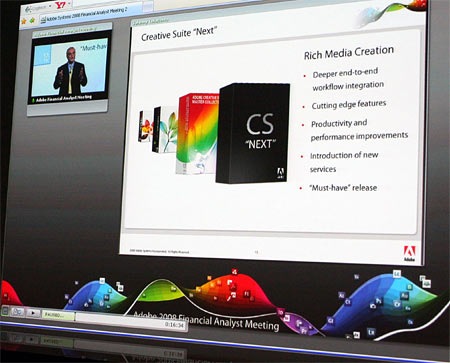
Some very exciting news about the new CS suite (dubbed "CS Next"). It is being reported that Photoshop CS Next (CS4) will have GPU acceleration, meaning that it would be able to leverage the extremely powerful processor that, for 2D work like Photoshop, usually sits dormant on that $400 gaming video card you have in your computer. This is really big news and could lead to very big performance gains for large computations like filters and screen rendering. No news on how the lack of a 64-bit flavor of Photoshop for the OS X platform will affect this development. Via TG Daily. There’s also some more info over at TUAW.
Posts in Hardware
CS Next: GPU Acceleration?
64 Bit Photoshop!
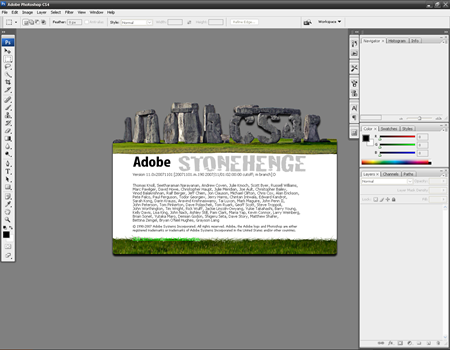
A senior Project Manager at Adobe (John Nack) has announced on his blog that Photoshop CS4 will in fact be available as a 64-bit version on the Windows Platform. What does this mean? The ability to reference all of your installed memory for one, that is assuming you are running a 64 bit flavor of Windows. Nack quoted that overall performance would increase around 8-12%. I would have to imagine that would get higher when working with very large files and a very large amount of RAM. You could theoretically have all of your temp data reside in RAM and never touch a physical swap drive. Above is a leaked screen-shot of CS4 which I’ve included simply to have a graphic for this post. I can’t vouch for it’s authenticity. (source) I have to say though, that looks just like CS3 and from what I remember from my time at Adobe, when I walked by the PS development area and saw some of the interfaces they were working on, they looked a lot different than this. Although this could just be an un-skinned development version, or it could be complete BS. During a search for this image I also ran across some articles stating that the program itself has been leaked onto the internets.
Here’s the scoop from the original source, John Nack’s blog.
So here’s the catch, and it’s a big one: OS X will not be getting 64 bit Photoshop. Crazy! As I have continually tested the speed of my OS X machine versus that of Windows XP using Photoshop, XP wins handily each time. This new development could widen that gap even further. But at the end of the day, OS X is light years beyond XP in terms of user experience and stability so I want to stick with it. But once CS4 comes out, if the speed tests are better by a significant margin I might have to make the switch back, because really, it’s all about raw performance when you’re trying to crank through the big files.
More on this as it develops.
In Flux
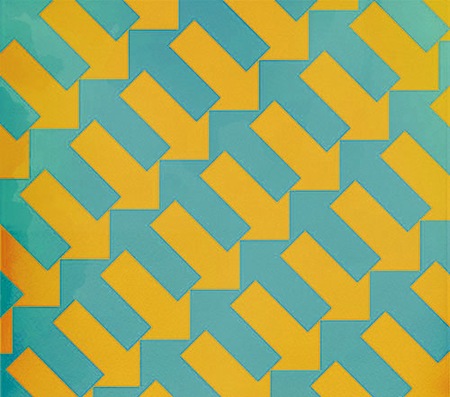
I spent my first couple days designing on a Mac and I must say, I am now an official convert. I got all the keys and mouse behaviors tweaked to emulate the PC way of doing things (I can’t live without my right-click) and it’s finally all become clear. I feel like such a flake, I really had it set in my head that it was all about PCs and didn’t really want to listen to people who told me otherwise. All the Macs I had used in the past were other people’s and hence were set up to their liking. Also, they always just seemed really slow. This thing is really quick; not quite as quick as the PC but I am willing to sacrifice a bit of performance for the user experience and stability I have found in OS X. I know, I know – this is a huge flip-flop from my previous stance but I am completely willing to admit I’ve totally fallen in love with this operating system and I was totally wrong in all of my assumptions about it. I don’t think I will ever be without a PC (at least not for the near future), I still make music on the PC just because all of my projects and sketches are in Sonar or Vegas format which are both PC-only. But I want to start playing around with Logic and see how I like that as an alternative and perhaps make the switch all together over the next year.
I feel like this all came to a head with my disappointment in Windows Vista. I had patiently awaited it’s release thinking it would be the new PC OS that would keep me going for the next 5 years, but in reality it turned out to be a dud on a lot of fronts. Meanwhile it seems that OS X has really matured into something incredible and the switch to Intel only made it that much more enticing. I made it through an entire night of designing without one hiccup or reboot in Photoshop which is very rare. All this time I had been attributing those issues to problems inherent to Photoshop, but apparently they were Windows issues as they have all disappeared. Another big part of this is color management. I have been using the Colorvision Spyder 2 system for a couple years now and it’s just such a headache to keep all the profiles in working order in XP. On the Mac it’s been smooth sailing.
I am not about to talk bad on Windows as I sort of feel like I am abandoning an old friend. It has it’s perks; but as a lot of you have said before, for design Mac just seems to be the way to go. So go ahead, bring on the I-told-you-so’s, I deserve every last one of them. Here’s to a brave new world, sans sleep learning.
Building a Photoshop Computer
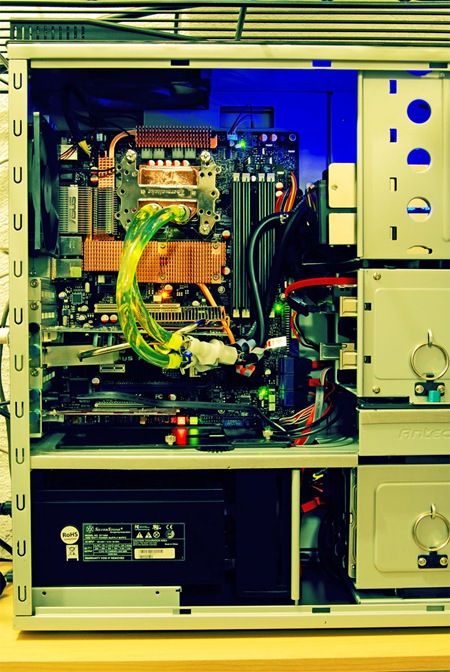
I’ve recently built a new computer and now that it’s complete and all is in working order I thought I would post some thoughts on the process and hopefully fill in some blanks on the way to go about building a computer for optimum performance in Photoshop (along with other multimedia applications). This is of course a very broad subject which would be hard to cover in its entirety in just one post, but I will try to hit the main points and provide some links to more in depth discussions. Also, if you’re a computer genius and expect this to be some sort of treatise on the intricacies of processor architectures and FSB speeds, best try somewhere else because I only know my hardware as much as I need to in order to make it work. So you might find that I oversimplify some things, but I am more concerned that things work and not why they work.
Caveat 1: This rig was built to do large scale print work (12×18" @ 300dpi and up). If you are just doing design for the web or screen (72dpi) a lot of this might be overkill. The CPU will still be an issue, but the memory and swap disk’s roles in speeding up performance will be greatly diminished.
Caveat 2: I will be assuming you are using Photoshop CS3 so some of the examples may not make sense (e.g. menu hierarchies) but all of the core concepts will apply to any version of Photoshop.
Caveat 3: I am also assuming you have some level of technical knowledge when it comes to computer hardware / software or you probably wouldn’t be trying to build your own computer.
Caveat Emptor: I have no idea what I’m talking about.
Caveat Googlor: If you need more info than is provided here, the collective super-brain known as Google is your friend and knows a hell of a lot more about all this than I do.
So if you’re feeling brave, click the link below to read the full article.
Reconfiguring…
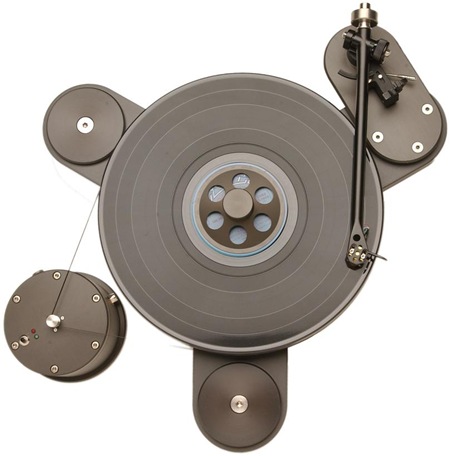
My last computer just wasn’t cutting it anymore performance-wise so I’ve spent the weekend building a new one. As a result, not much bloggery going down, but I’ll be back on it tomorrow. So for now, here’s a random picture of some sort of bad-ass record player. I’ll do a post on Photoshop / Media Production performance as it relates to hardware configurations once I’m done with the new machine.
Graphics Monitors
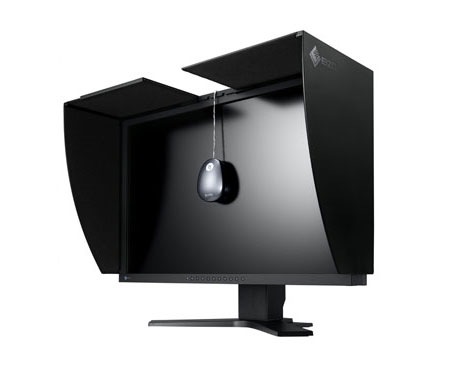
The bane of my existence is proofing, that subtle art form which attempts to ensure that the colors you are seeing on your monitor will appear the same way in printed form or on other’s monitors (when viewing on the internet). I currently use a Samsung 204t LCD monitor with the Pantone Spyder2 calibration system, and while they perform well, I would like something more reliable (for instance the 204t displays slightly differently depending on what part of the screen you’re looking at; non-uniform brightness / color / contrast across the full area of the LCD). Pictured above is the Eizo CG241w, apparently the industry standard, but at about $2,300 it’s a big investment. Consider that they are only rated to reliably reproduce color for about 5 years and it starts to look like a rather bad investment. I have scoured internet bulletin boards and trade magazines, only to find a bunch of conflicting opinions and manufacturer shills.
So that leads me to my question: What has everyone else been using? Is there an alternative that isn’t as costly as the Eizo? Does anyone still use CRT? I got rid of my last one a couple years back to go all LCD and now sort of regret it. What sort of calibration systems are you using? Answer back in The Comments >
Keep in mind that I am all PC, so I can’t calibrate an Apple cinema on my system (there are no OSD controls on the cinemas, only OS-embedded software controls which are mac only). Although I can use the Dell 24", which apparently has the same LCD element as the Cinemas (although both have received poor reviews).